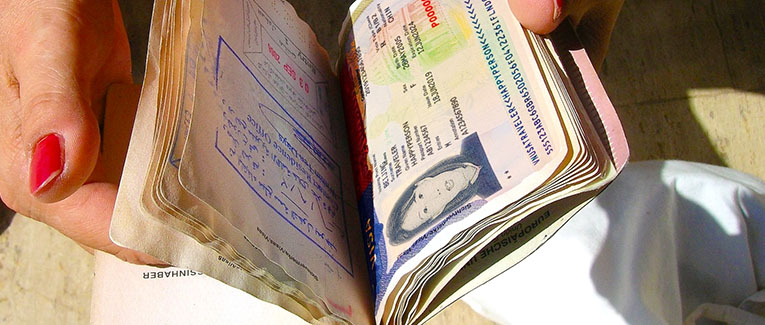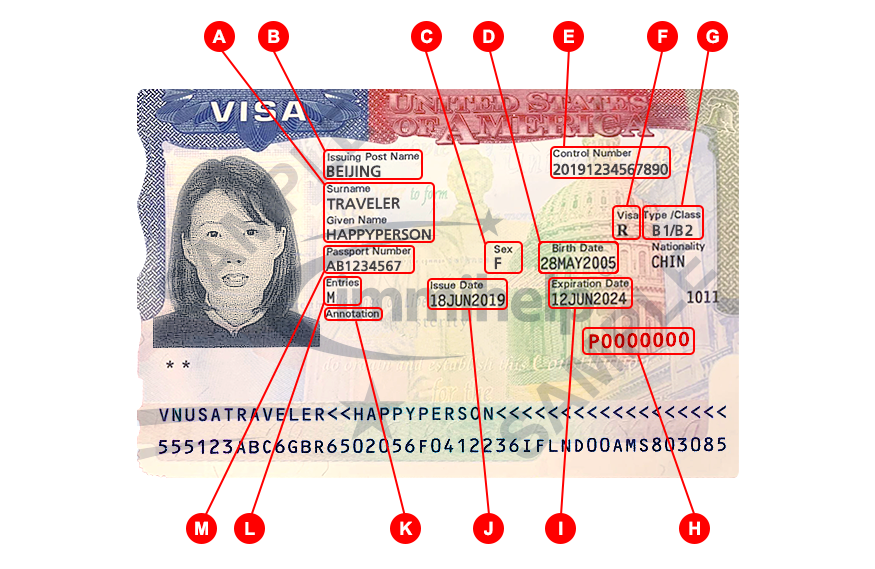
When you are granted a visa by a US embassy or consulate, you will most likely end up with a US visa stamp inside your passport. The US visa stamp is what allows you to apply for admission into the United States at a US port of entry, such as an airport, seaport, or land border crossing. Knowing how to read a US visa stamp is valuable for any visa holder, as inaccurate information could prevent you from being able to enter the US.
US Visa Stamps: Explained
When you arrive at a US port of entry, a Customs and Border Protection (CBP) officer will examine your US visa stamp to determine if you should be allowed into the US. It is essential that all of the information on the visa stamp is correct.
You should examine your visa stamp as soon as you receive it to ensure all of the information on it is accurate. Use the following guide to learn how to read a US visa stamp:

A. Your Name – This field will contain your surname (family name) followed by your given name. It should match the information on the biometric page of your passport exactly.
B. Issuing Post Name – This is typically the US embassy or consulate that granted you the visa.
C. Sex – The sex printed on your visa stamp should match the sex on your passport.
D. Birthdate – Once again, this should match the date on your passport exactly.
E. Control Number – What is a visa control number? It is simply a number issued by the US Department of State to track visa issuance. In most cases, this number will not be important to the visa holder.
F. Visa – If you have a standard passport, you will see an “R” here, which is an abbreviation for “regular.”
G. Type/Class – This field indicates the type of visa you’ve been issued. For instance, if you’re traveling to the US as a visitor, you will see B1/B2 here.
H. Visa Number – Your visa number is sometimes called a visa foil number. For newer visa stamps, it will be printed in red, and will contain either eight numbers, or one letter followed by seven numbers.
I. Visa Expiration Date – The expiration date on your visa is the last day you are allowed to seek entry into the US using this visa.
J. Issue Date – This is the date the US consulate or embassy issued your visa.
K. Annotation – This field can include additional information about your visa, if necessary. For instance, a student entering the US on an F1 student visa may have their SEVIS number and school name in this field.
L. Entries – This is the number of times you are allowed to apply for entry to the US on this visa. If you see an M here, it means you can seek entry multiple times with no limit for the period the visa is valid.
M. Passport Number – This field should match your passport number exactly. If it does not, you may have difficulty gaining entry into the US.
Now That You Know How to Read A US Visa Stamp…
Check it against your passport and personal information before you travel to the US! Though errors are rare, they are possible. Catching the error before you arrive at the US port of entry can save you a lot of time and hassle. If you do find an error, contact the issuing embassy or consulate as soon as possible.

